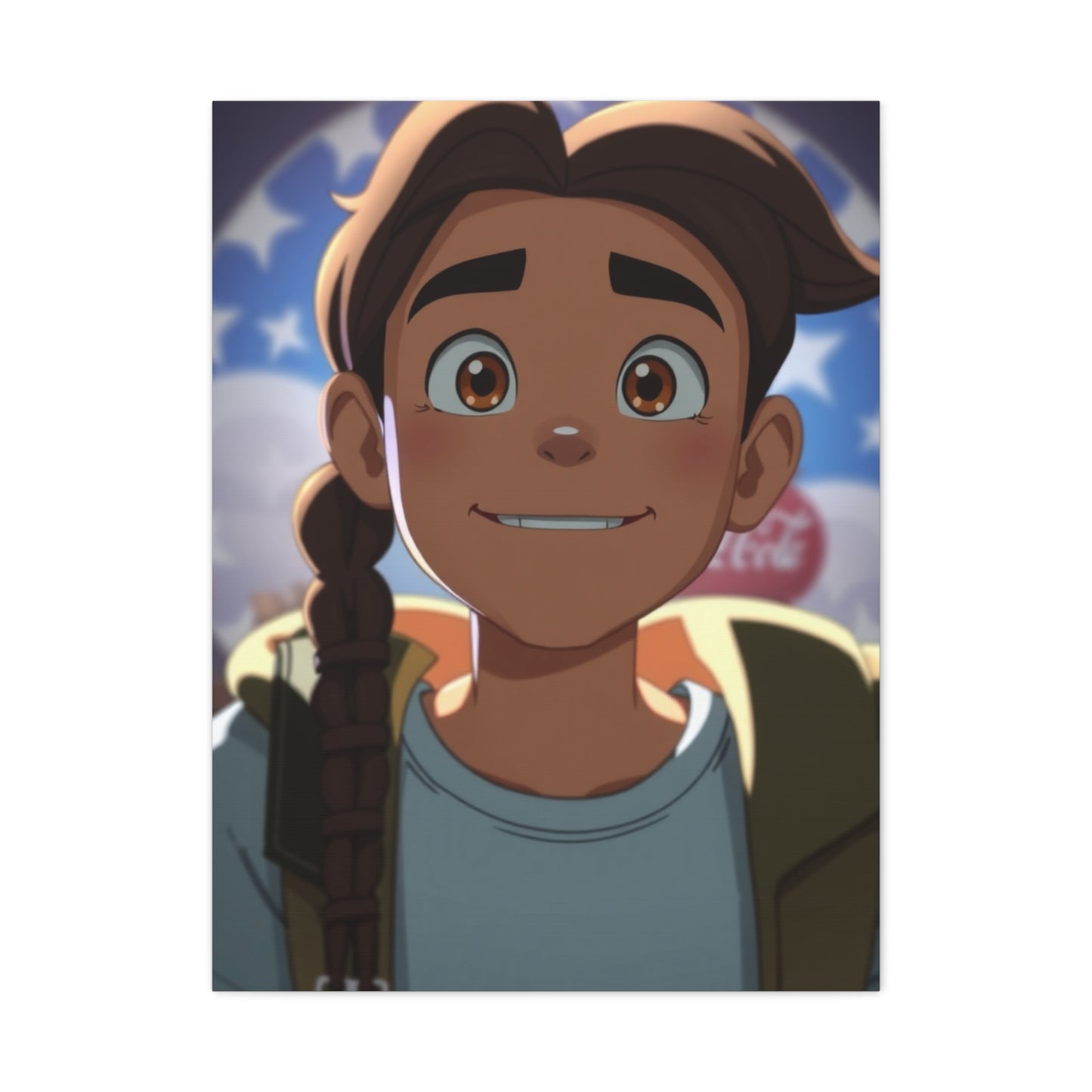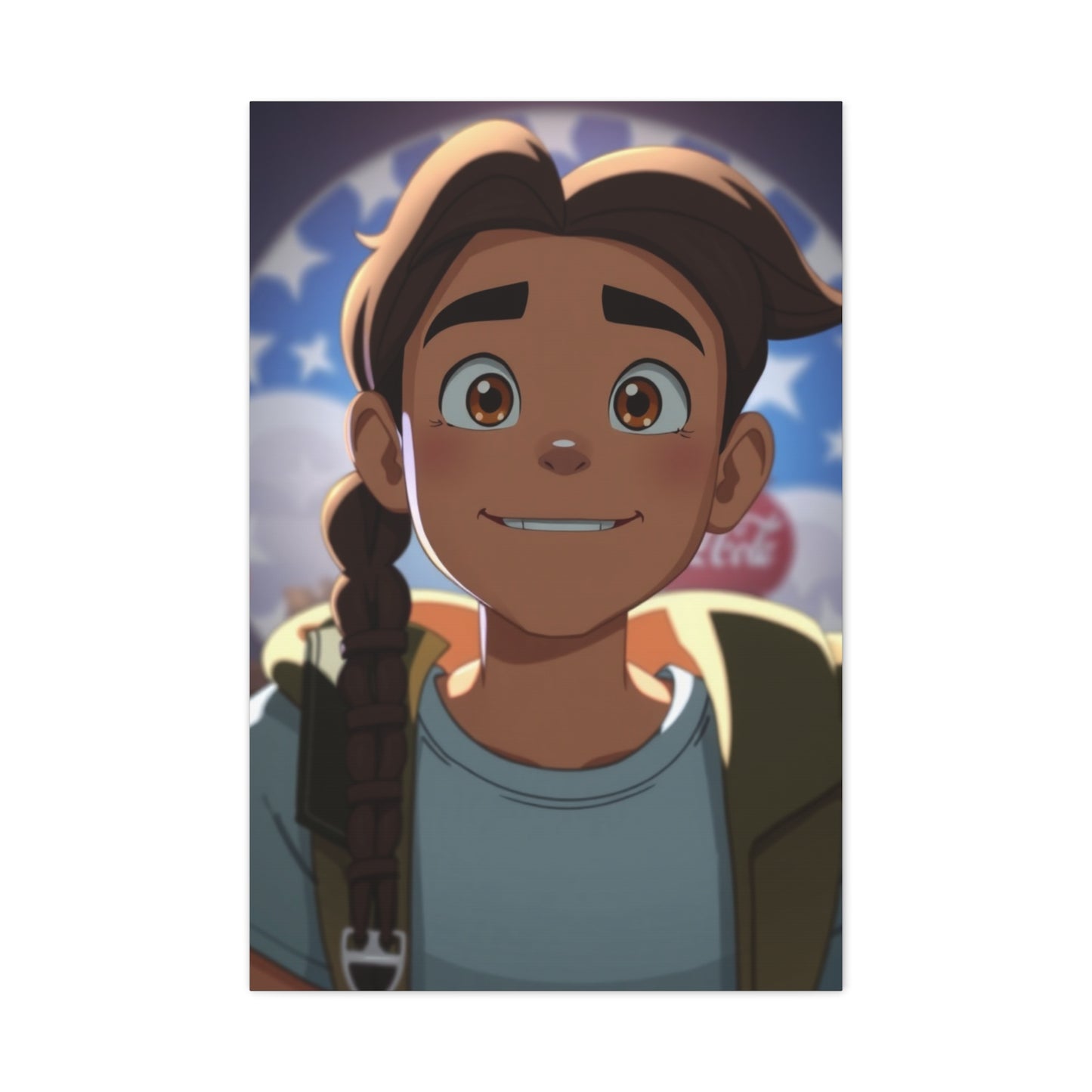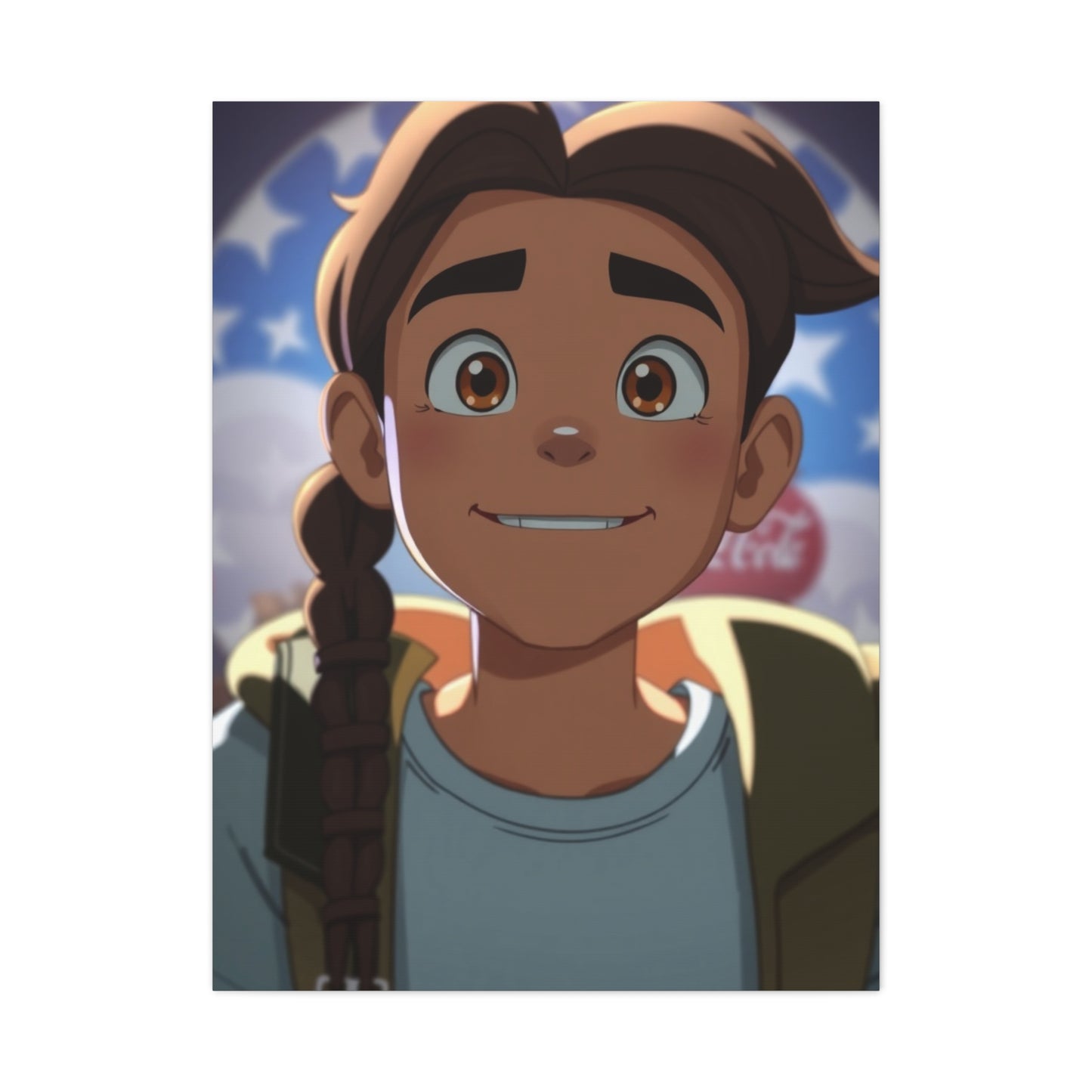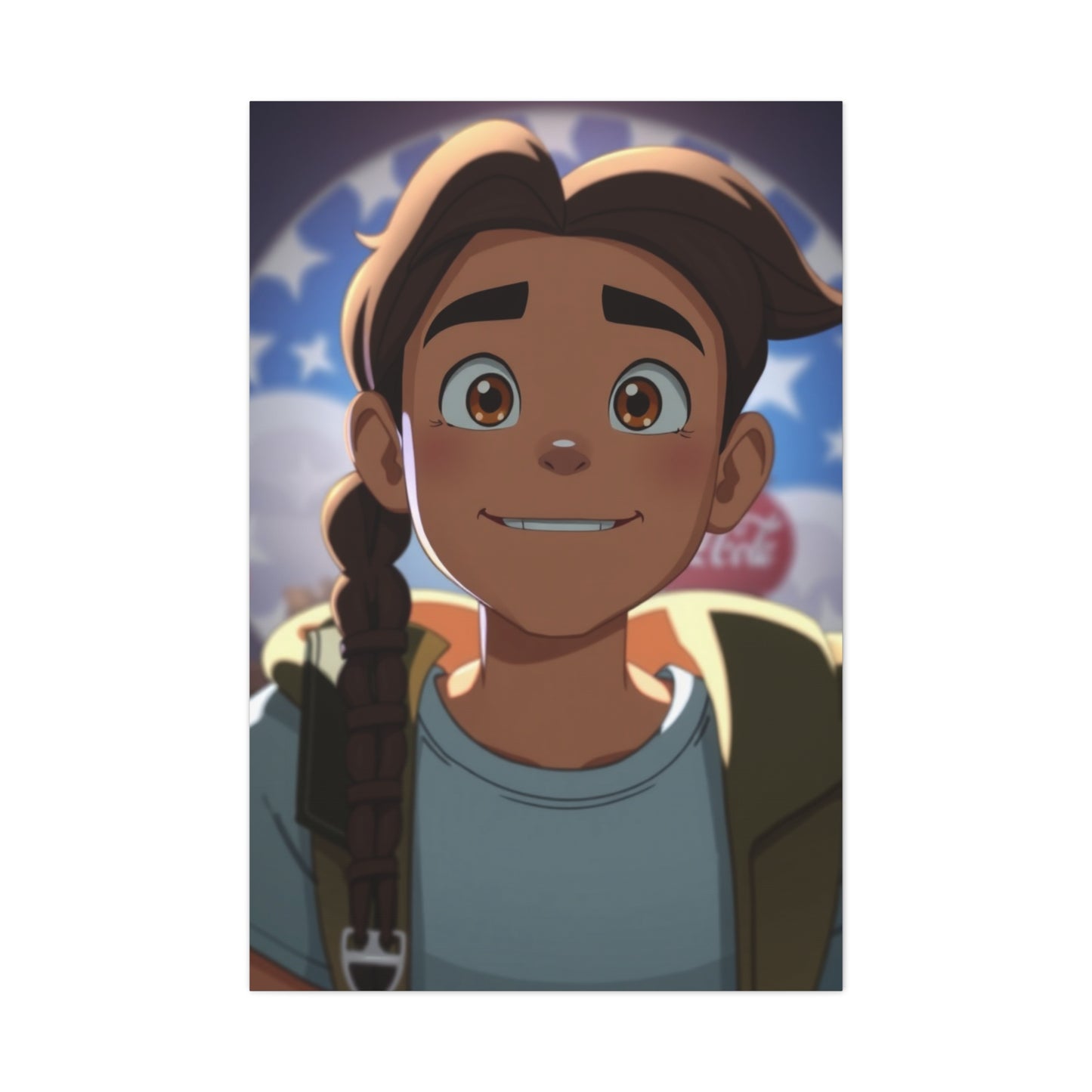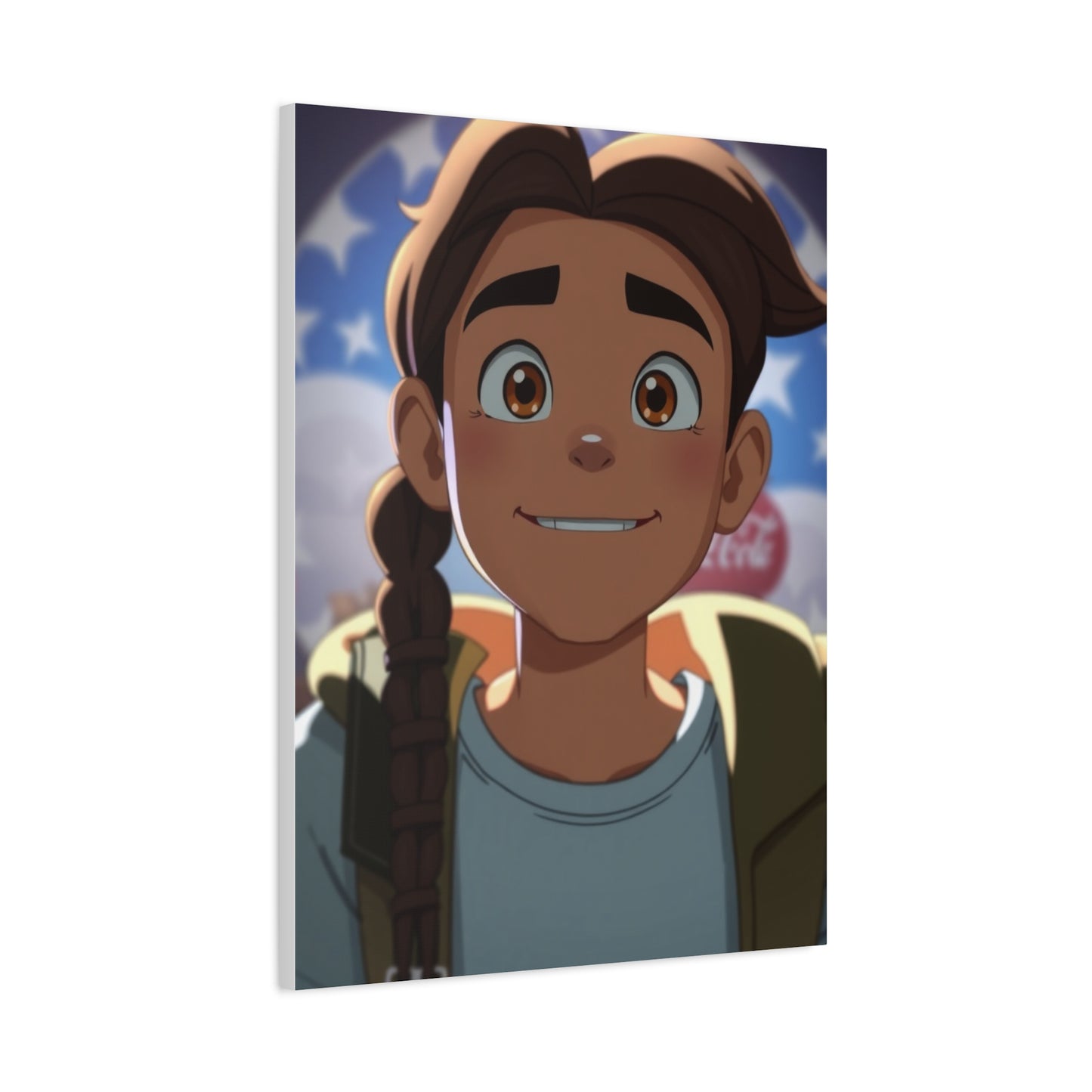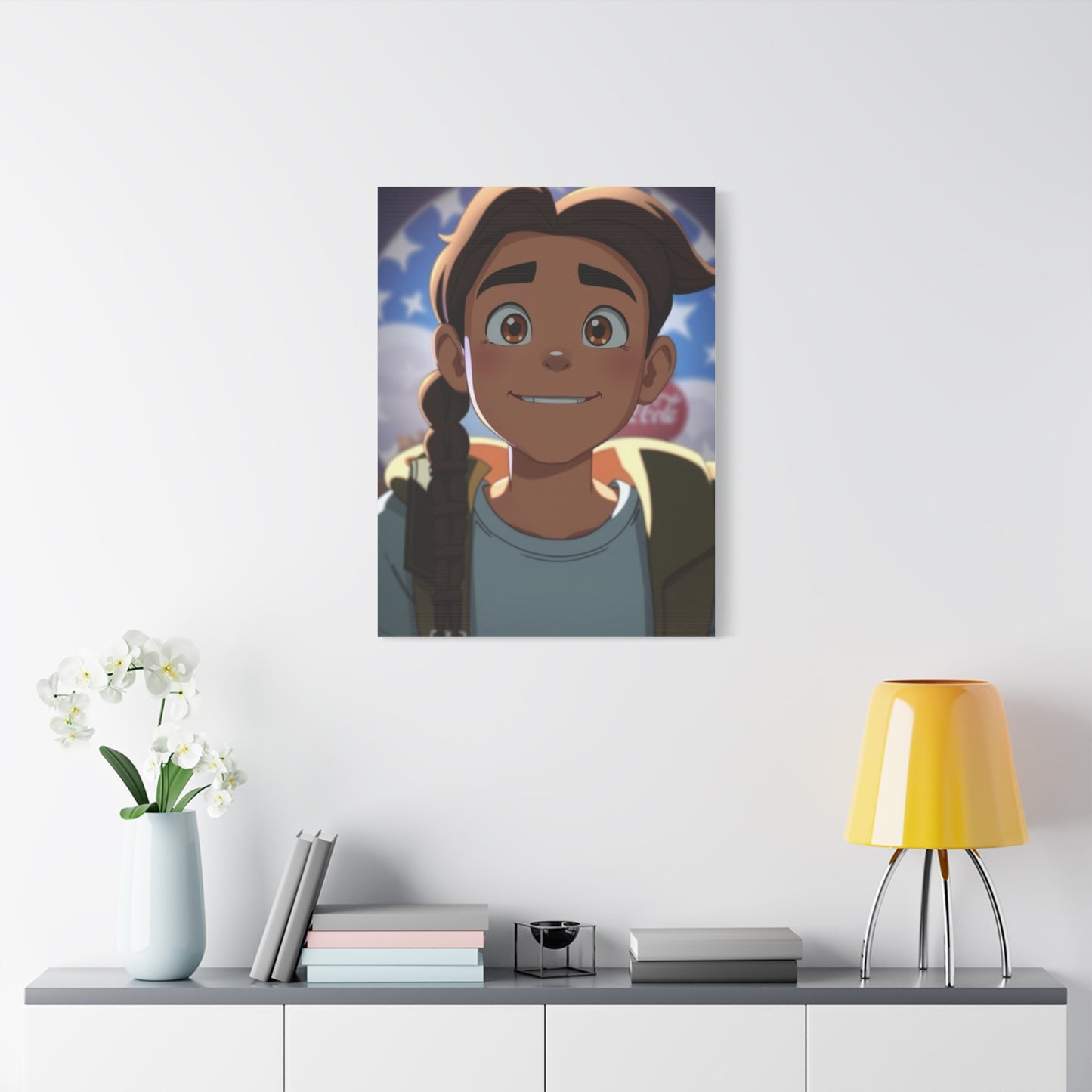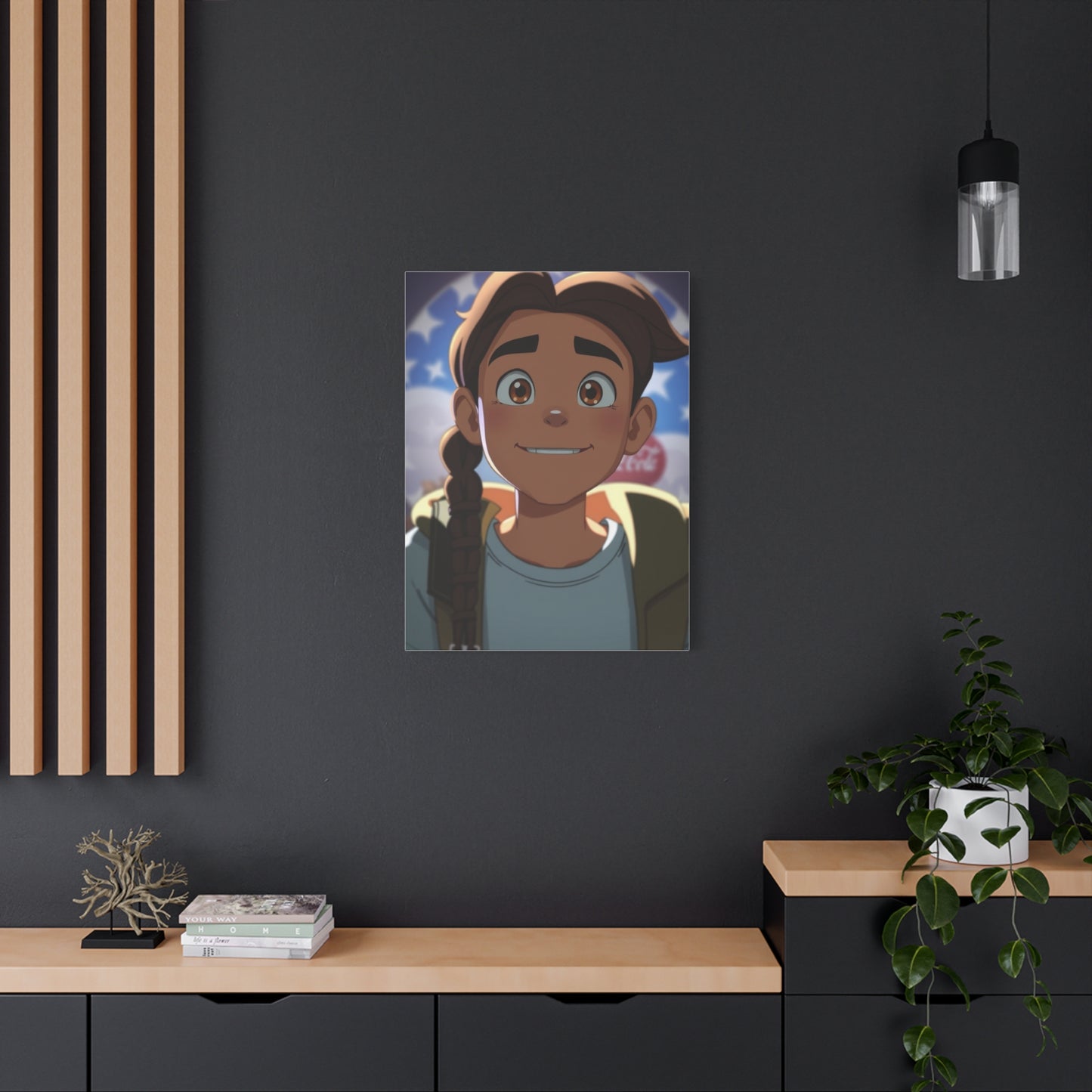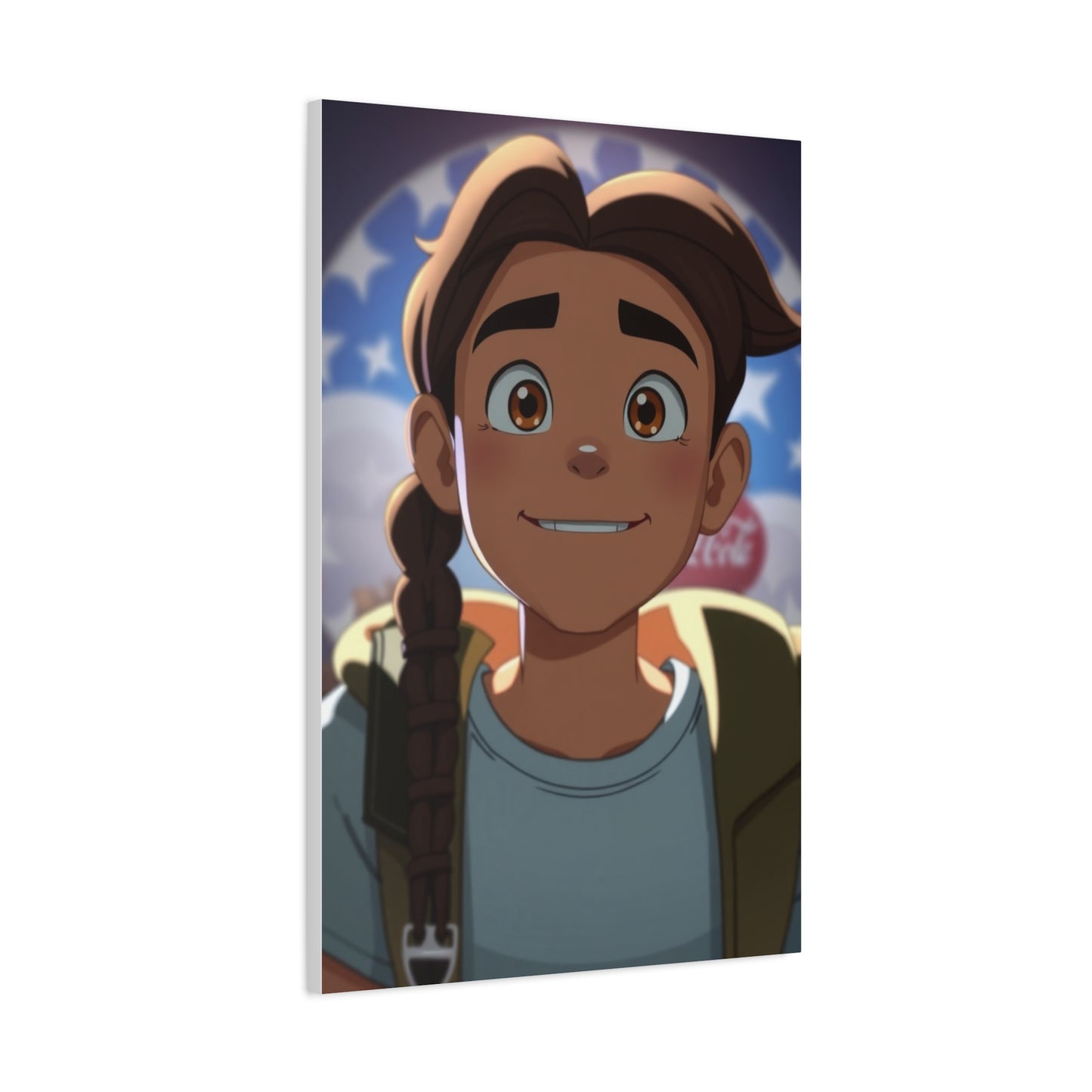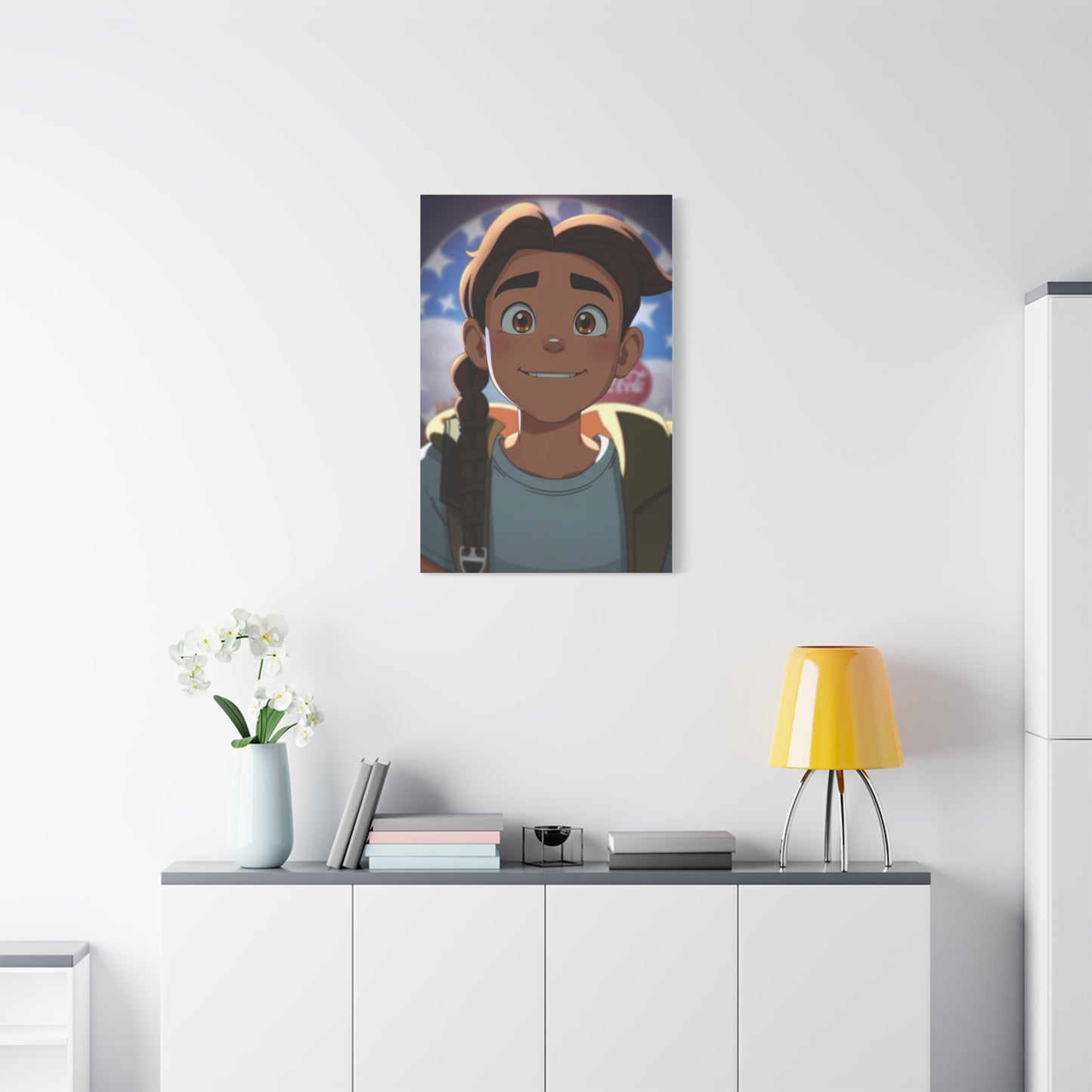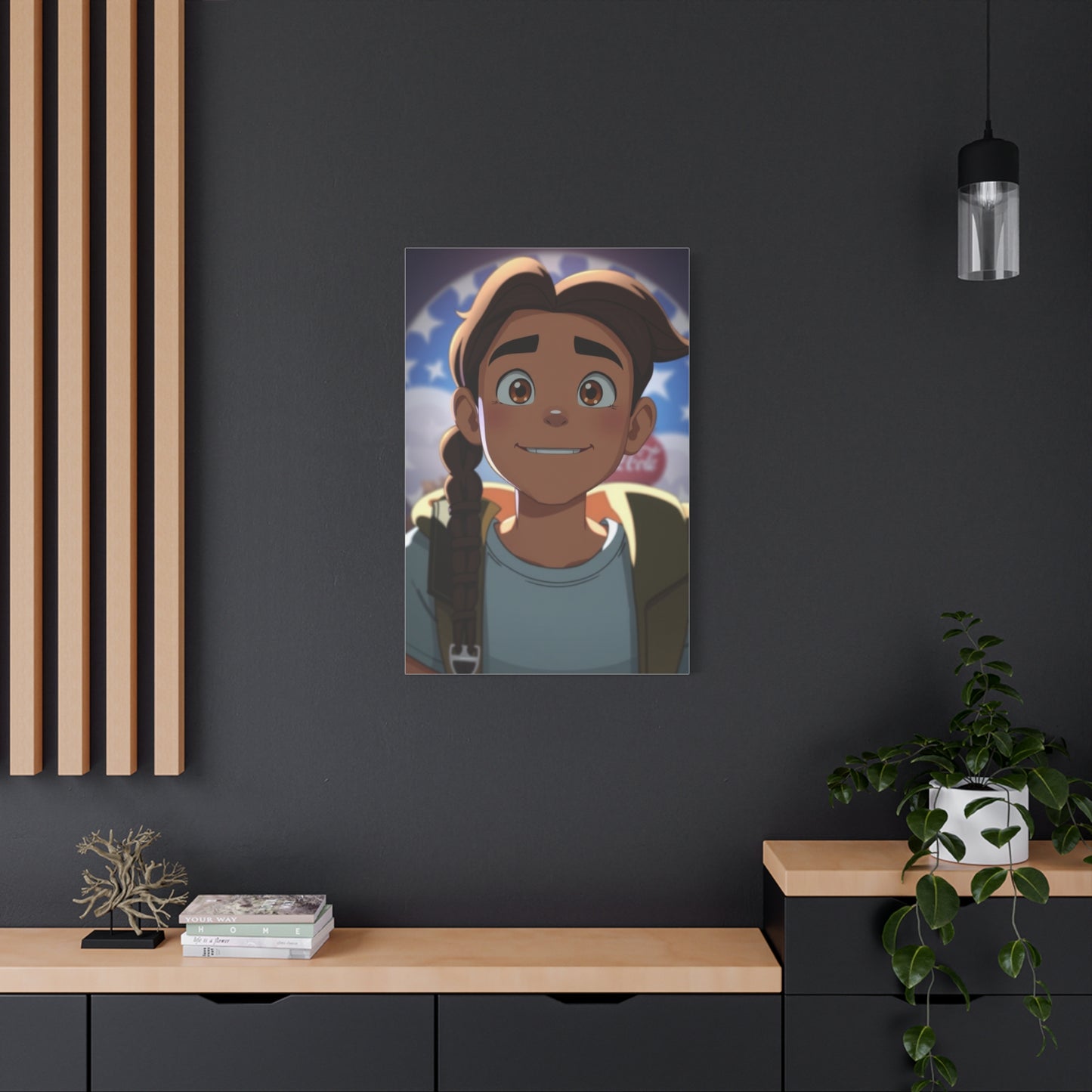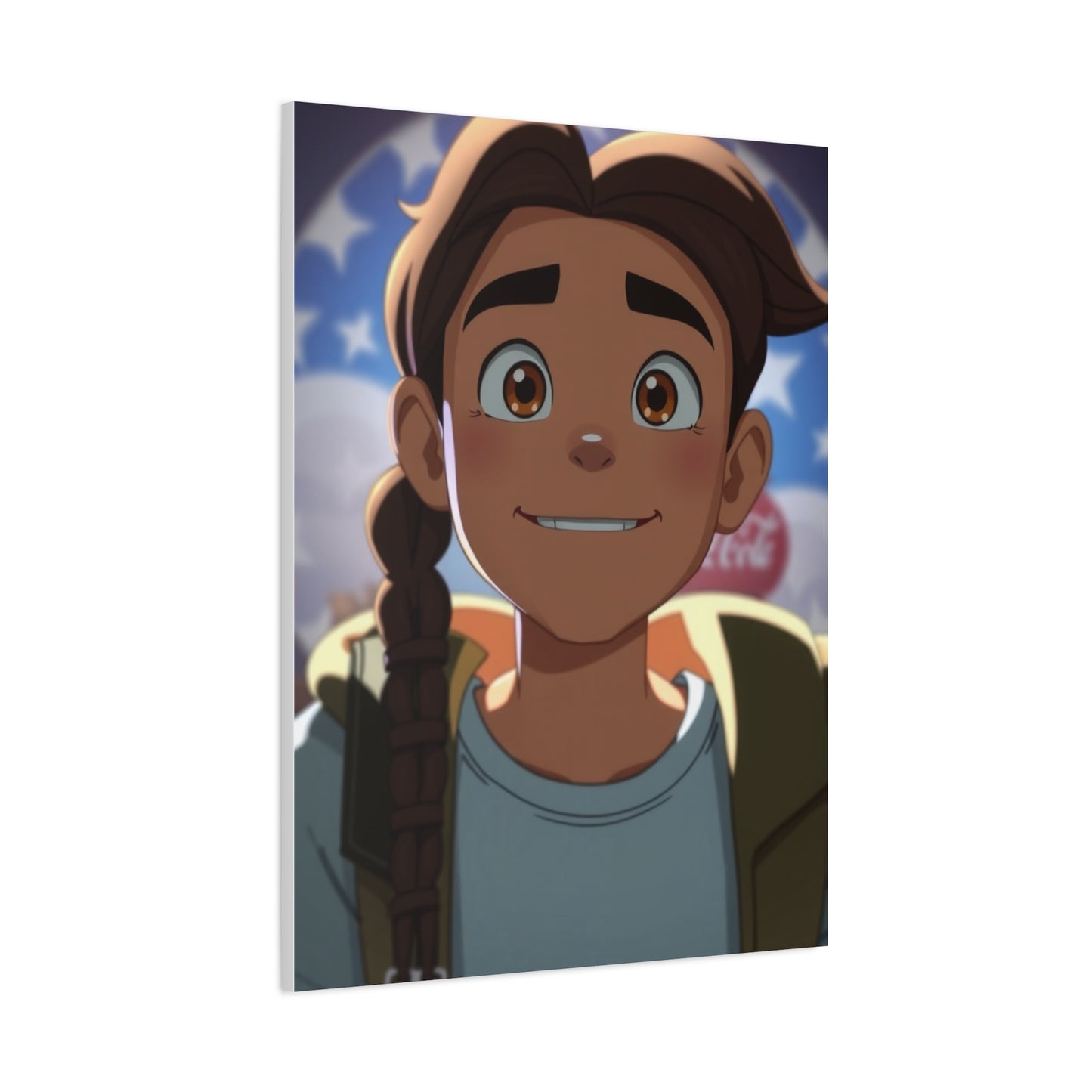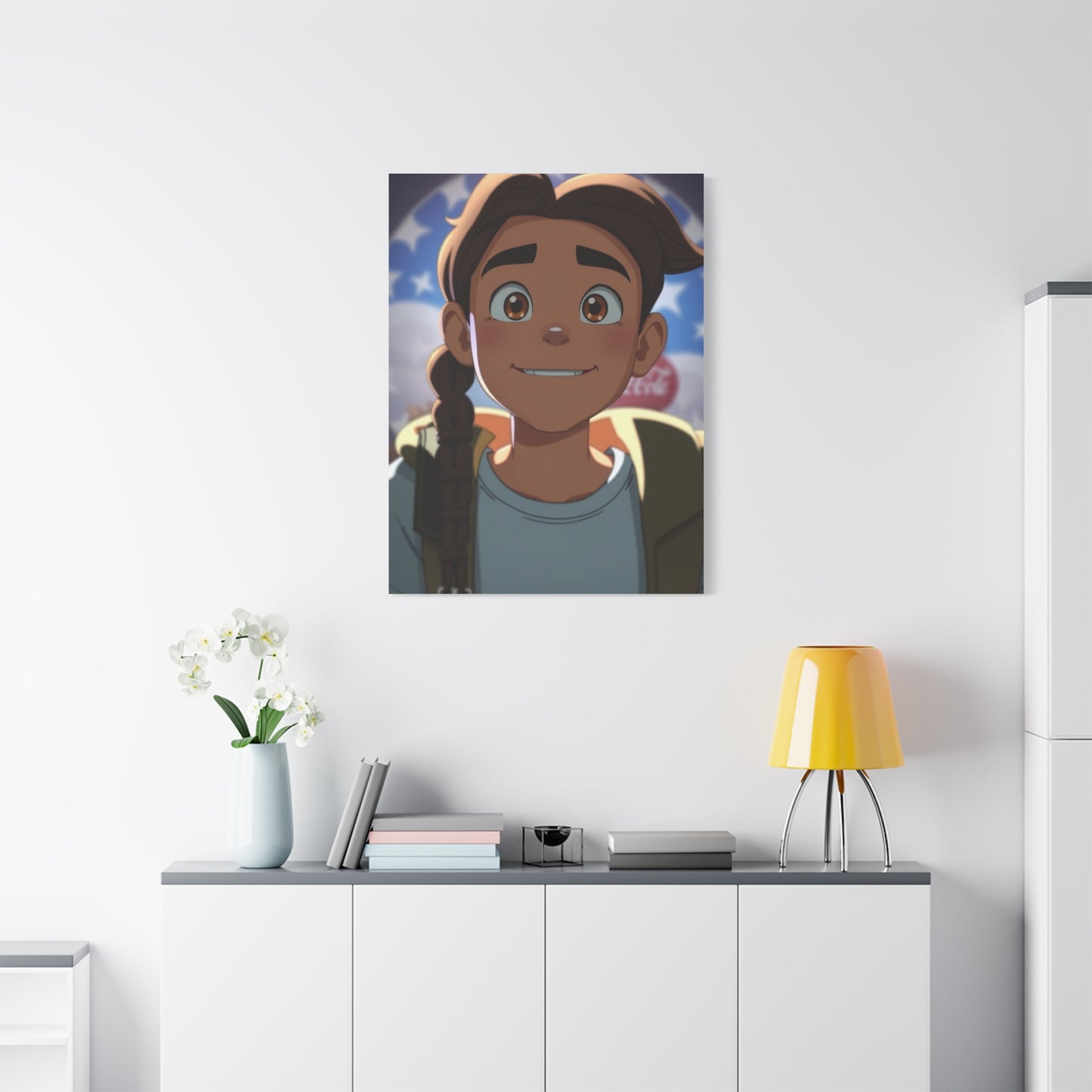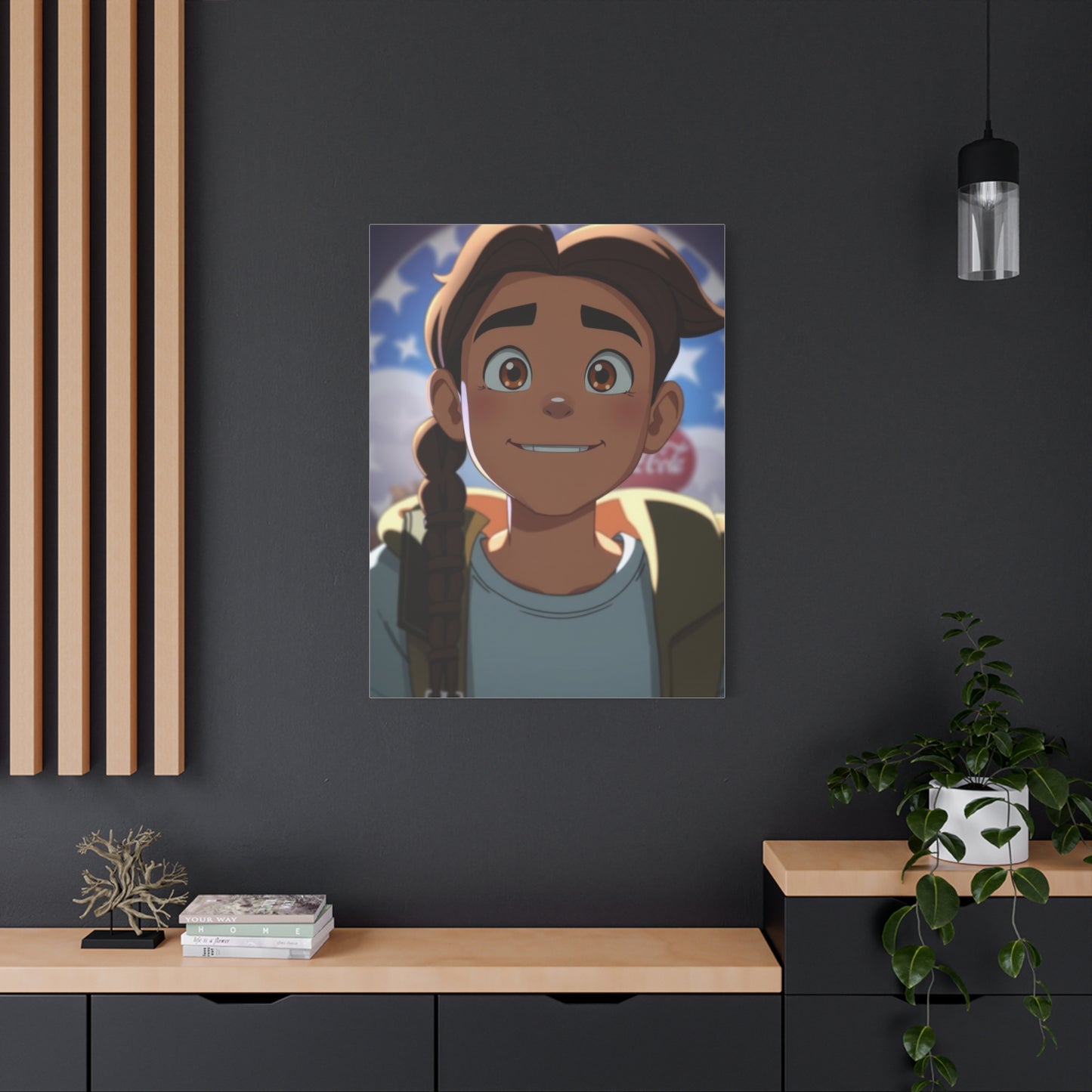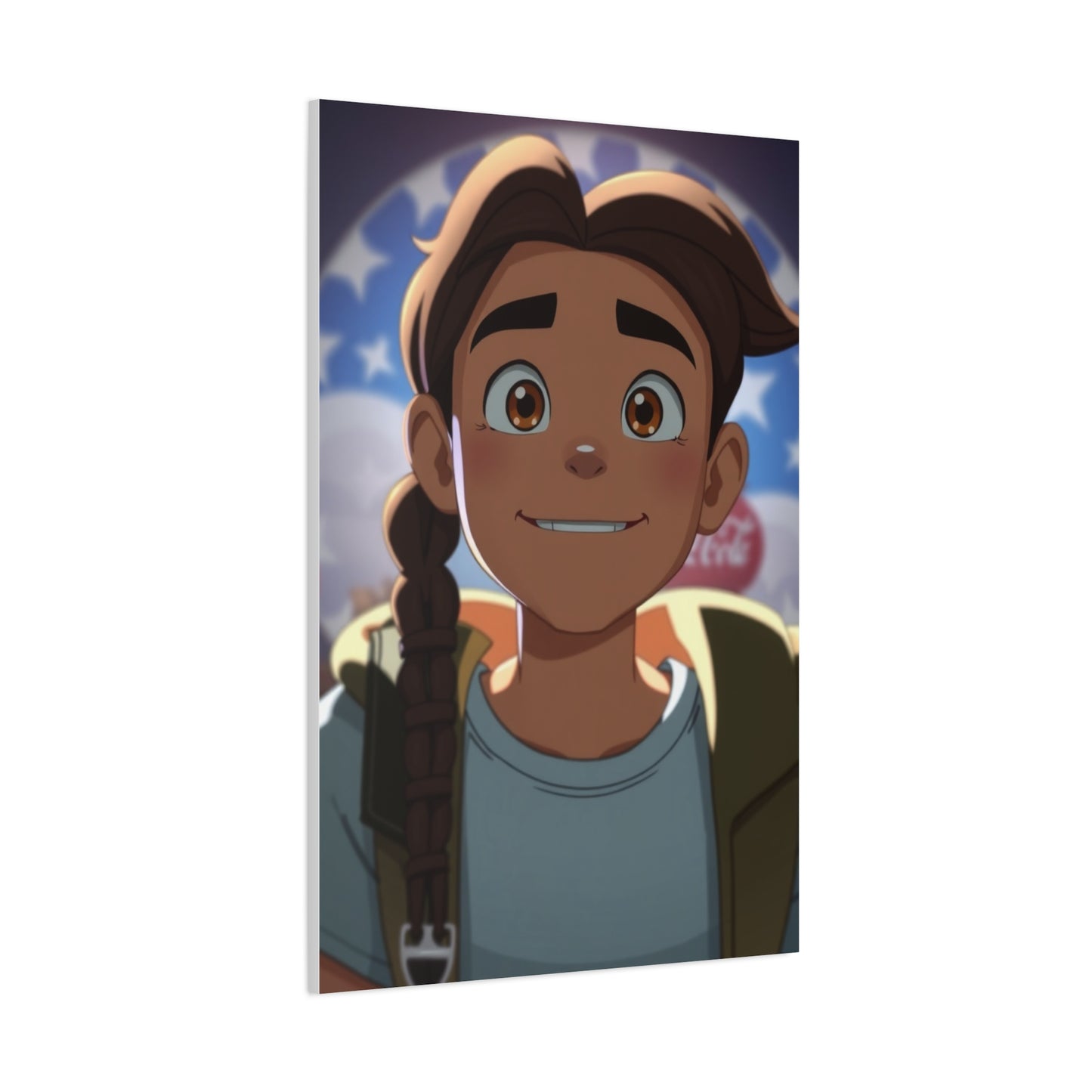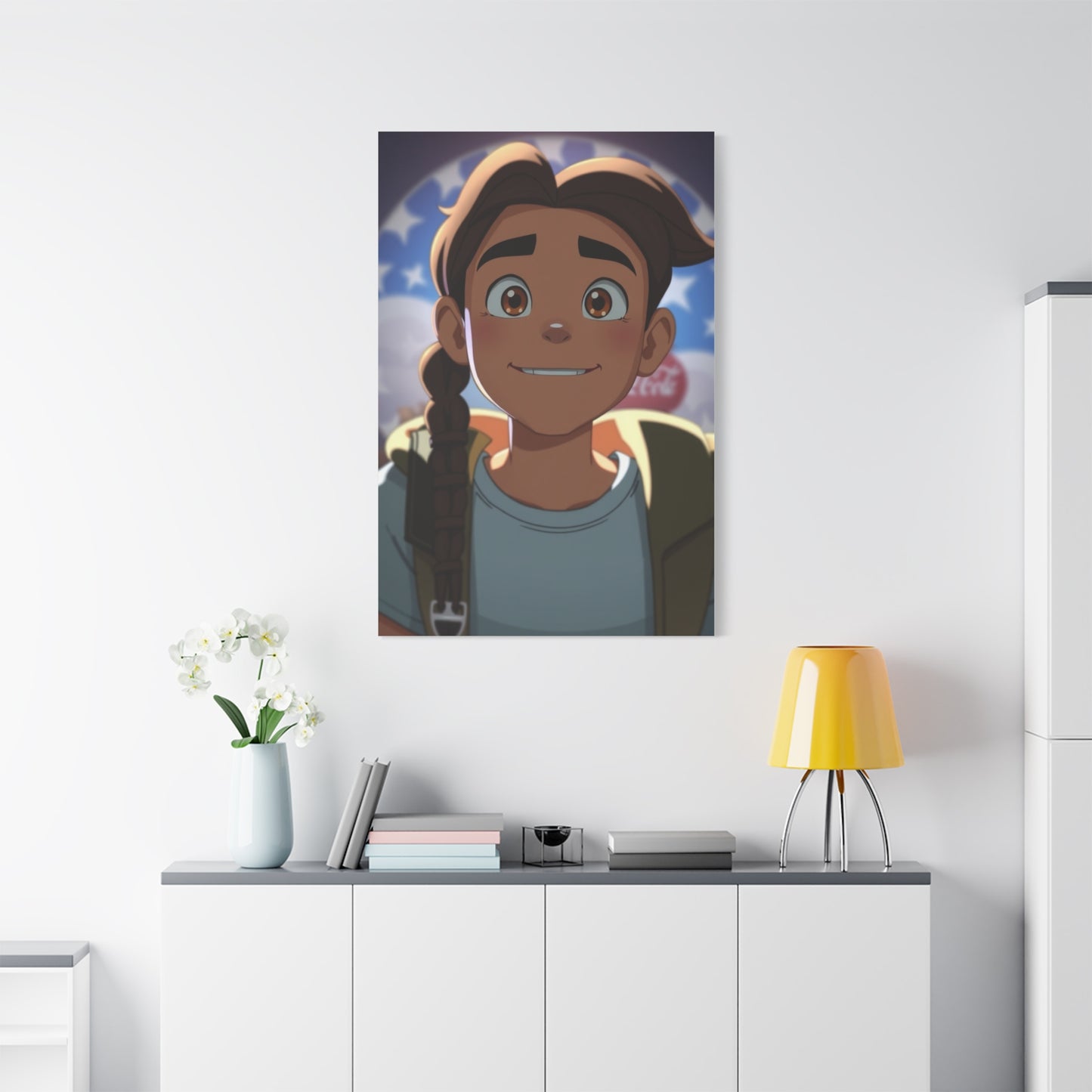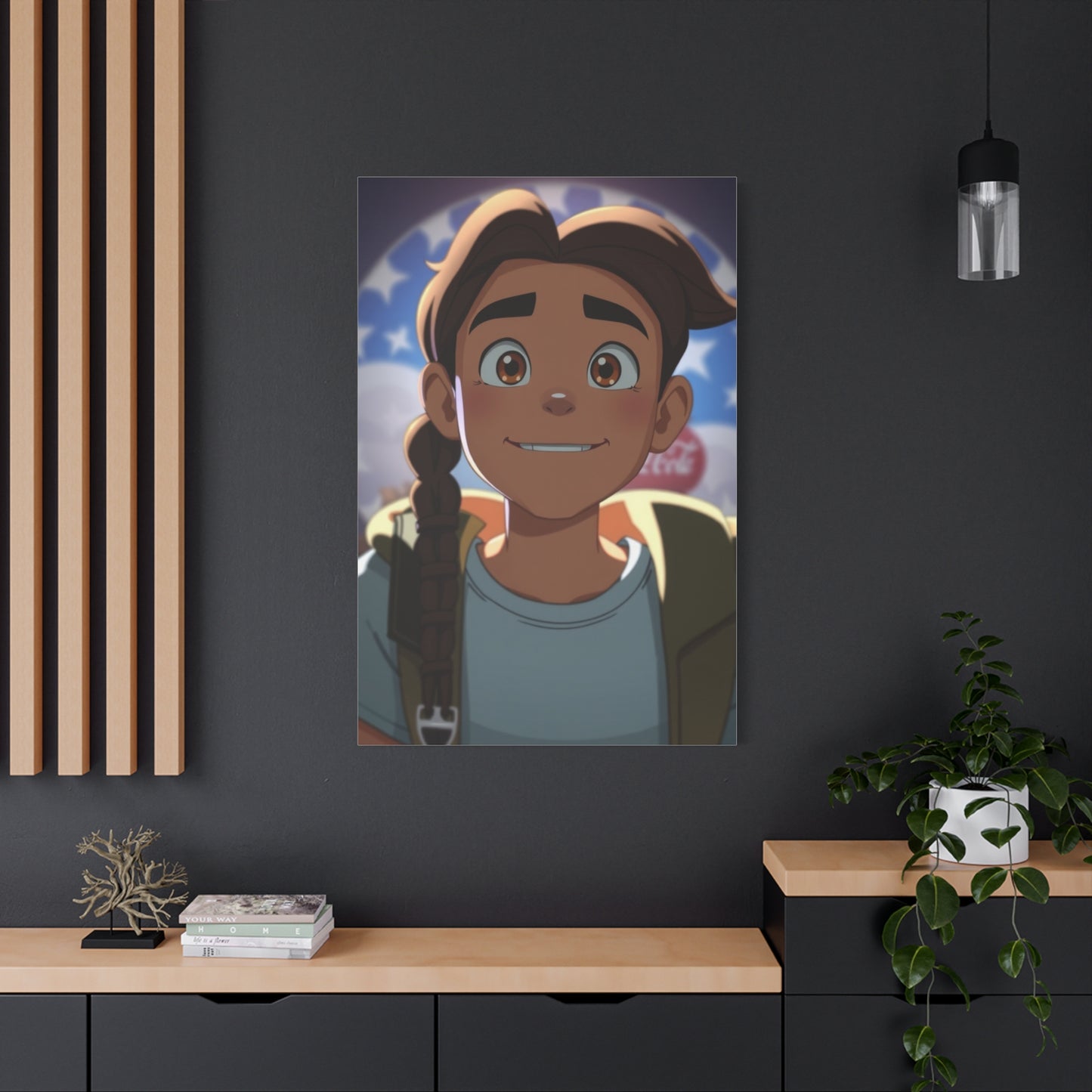The Beauty of Stillness: Minimalist Approaches in Refined Animated Masterpieces
The landscape of contemporary visual arts has undergone a revolutionary transformation with the emergence of sophisticated animated wall art. This innovative medium combines traditional artistic principles with cutting-edge digital technology, creating dynamic visual experiences that captivate viewers through elegant motion and refined aesthetics. Unlike conventional static artworks, these animated masterpieces introduce temporal elements that breathe life into wall-mounted displays, offering viewers an ever-changing visual narrative that evolves over time.
The development of animated wall art represents a significant departure from traditional artistic mediums, incorporating advanced digital techniques with classical compositional principles. Artists working in this medium must master both the technical aspects of animation software and the timeless principles of visual composition, color theory, and artistic expression. This dual expertise creates a unique artistic language that speaks to modern audiences while maintaining the sophisticated appeal of fine art.
Modern animated wall art distinguishes itself through its emphasis on subtlety and refinement rather than overwhelming spectacle. These works often feature gentle transitions, elegant color palettes, and carefully choreographed movements that enhance rather than distract from the overall aesthetic experience. The sophisticated approach to motion graphics in this context prioritizes artistic merit over technical showmanship, resulting in pieces that function as both technological marvels and genuine works of art.
The integration of motion into wall-mounted art forms challenges traditional notions of permanence and stability in visual arts. While classical paintings and sculptures maintain fixed compositions, animated wall art introduces variables of time, movement, and change that create unique viewing experiences for each encounter. This temporal dimension adds layers of meaning and interpretation that extend beyond what static mediums can achieve, making each viewing session a distinct artistic encounter.
Contemporary artists embracing this medium have developed sophisticated techniques for creating seamless loops that maintain visual interest without becoming repetitive or distracting. The challenge lies in creating movements that feel natural and purposeful while avoiding the mechanical quality that can plague digital animations. Successful animated wall art achieves a delicate balance between motion and stillness, creating rhythms that complement architectural environments and enhance rather than compete with surrounding design elements.
The technological infrastructure supporting animated wall art has evolved significantly, with high-resolution displays, advanced processing capabilities, and refined software tools enabling artists to realize increasingly complex visions. These technological advances have democratized access to professional-quality animation tools while simultaneously raising the bar for artistic achievement in this medium. Artists can now create works with unprecedented visual fidelity and sophisticated motion graphics that rival traditional film and television production values.
Sophisticated Color Palettes and Visual Harmony in Animated Displays
The mastery of color relationships forms the foundation of exceptional animated wall art, requiring artists to understand how colors interact not only spatially but also temporally as they shift and evolve throughout the animation cycle. Unlike static artworks where color relationships remain constant, animated pieces must maintain visual harmony across multiple states of transformation, creating cohesive aesthetic experiences that remain pleasing throughout the entire animation sequence.
Sophisticated animated wall art employs color palettes that demonstrate restraint and refinement, often drawing inspiration from classical artistic traditions while incorporating contemporary sensibilities. These palettes typically feature carefully selected ranges of complementary and analogous colors that create visual cohesion while allowing for dynamic transitions and subtle variations. The challenge for artists lies in maintaining color harmony while introducing movement and change, ensuring that each frame of the animation contributes to the overall aesthetic vision.
The temporal aspect of color in animated wall art introduces unique considerations for artists working in this medium. Colors must not only work well together in static compositions but also transition seamlessly through various states of animation. This requires deep understanding of color theory, including concepts such as simultaneous contrast, color temperature relationships, and the psychological effects of different hues on viewer perception and emotional response.
Advanced color grading techniques borrowed from cinematography have found their way into animated wall art, allowing artists to create sophisticated mood transitions and atmospheric effects that enhance the overall viewing experience. These techniques involve precise control over hue, saturation, and luminance values throughout the animation sequence, creating subtle but powerful effects that guide viewer attention and create emotional resonance with the artwork.
The integration of lighting effects within animated wall art adds another layer of complexity to color management, as artists must consider how simulated lighting conditions affect color perception and visual hierarchy within their compositions. Dynamic lighting effects can dramatically alter the apparent colors of objects within the animation, requiring careful planning and technical expertise to achieve desired aesthetic results while maintaining visual consistency.
Environmental considerations also play a crucial role in color selection for animated wall art, as these pieces must function effectively under various lighting conditions and in different architectural contexts. Artists must consider how ambient lighting will interact with their chosen color palettes, ensuring that the artwork maintains its intended visual impact regardless of external lighting conditions or time of day.
Excellence in Digital Animation Workflows
The creation of refined animated wall art demands mastery of sophisticated digital workflows that combine artistic vision with technical precision. Professional artists in this field utilize industry-standard software packages that offer comprehensive tools for animation, compositing, and rendering, enabling the creation of high-quality content that meets the exacting standards required for gallery exhibitions and private collections.
Modern animation workflows for wall art applications typically begin with detailed storyboarding and concept development phases that establish the artistic vision and technical parameters for the final piece. Artists must carefully plan each aspect of the animation, from timing and pacing to color transitions and compositional changes, ensuring that every element contributes to the overall aesthetic goals while maintaining technical feasibility within the constraints of display hardware and viewing environments.
The rendering process for high-quality animated wall art requires significant computational resources and technical expertise to achieve professional results. Artists must balance visual quality with file size and playback performance, optimizing their animations for smooth playback on display hardware while maintaining the visual fidelity necessary for gallery-quality presentations. This often involves complex encoding processes and format conversions that preserve artistic intent while ensuring technical compatibility.
Quality control processes in professional animated wall art production involve rigorous testing across multiple display platforms and viewing conditions. Artists must verify that their work maintains consistent visual quality across different screen technologies, resolution formats, and color gamuts, ensuring that the artistic vision translates effectively regardless of the specific hardware used for display.
Color management becomes particularly critical in animated wall art workflows, as artists must ensure accurate color reproduction across the entire production pipeline from initial creation through final display. This requires calibrated monitoring equipment, standardized color profiles, and careful attention to color accuracy throughout the editing and rendering processes to maintain artistic integrity and visual consistency.
The archival considerations for animated wall art present unique challenges compared to traditional art forms, as digital files must be preserved in formats that remain accessible as technology evolves. Artists and collectors must consider long-term file format compatibility, storage requirements, and migration strategies to ensure that these dynamic artworks remain viewable for future generations.
Architectural Integration and Environmental Harmony
The successful integration of animated wall art into architectural environments requires careful consideration of spatial relationships, lighting conditions, and overall design harmony. Unlike traditional artworks that remain static within their environments, animated pieces must complement and enhance architectural features while avoiding visual conflicts that could disrupt the intended atmosphere of the surrounding area.
Professional installation of animated wall art involves detailed site analysis and environmental assessment to determine optimal placement, viewing angles, and technical requirements. Artists and installers must consider factors such as ambient lighting levels, sight lines, traffic patterns, and acoustic considerations to ensure that the artwork functions effectively within its intended environment while providing optimal viewing experiences for visitors.
The scale and proportion of animated wall art must be carefully calibrated to match the architectural context, with larger installations requiring more sophisticated content that can maintain visual interest across expansive display areas. Artists must adapt their compositional strategies to accommodate different viewing distances and angles, ensuring that the artwork remains engaging whether viewed from close proximity or from across large rooms or outdoor environments.
Lighting design plays a crucial role in the successful integration of animated wall art, as artificial lighting must be carefully coordinated with the luminosity and color characteristics of the digital display. Professional installations often require custom lighting solutions that complement rather than compete with the animated content, creating unified visual environments that enhance both the artwork and the surrounding architectural features.
Climate control considerations become particularly important for animated wall art installations, as digital display equipment generates heat and may be sensitive to temperature and humidity fluctuations. Proper environmental controls ensure reliable operation and longevity of both the display hardware and the artistic content, protecting the investment in both the artwork and the technical infrastructure required for its presentation.
Maintenance and technical support requirements for animated wall art installations must be carefully planned and budgeted, as these dynamic artworks require ongoing technical monitoring and occasional updates to maintain optimal performance. This includes regular cleaning of display surfaces, software updates, hardware maintenance, and periodic content refreshes to ensure that the artwork continues to provide engaging experiences over extended periods.
Movements and Cultural Influences in Digital Animation
The development of refined animated wall art draws inspiration from numerous artistic movements and cultural traditions, creating a rich tapestry of influences that inform contemporary practice in this emerging medium. Artists working in animated wall art often reference classical artistic principles while incorporating contemporary digital aesthetics, creating hybrid works that bridge traditional and modern artistic sensibilities.
The influence of abstract expressionism can be clearly seen in many animated wall art pieces, with artists creating dynamic compositions that emphasize color, form, and movement over representational content. These works often feature flowing, organic movements that echo the gestural qualities of traditional abstract painting while taking advantage of the temporal possibilities unique to animated media.
Minimalist principles have found particularly successful application in animated wall art, with many artists embracing simplified compositions and restricted color palettes that emphasize subtle movement and elegant transitions. This approach aligns well with contemporary architectural trends toward clean, uncluttered environments while providing visual interest through carefully orchestrated motion and timing.
The kinetic art movement of the mid-twentieth century serves as an important precursor to contemporary animated wall art, establishing precedents for artworks that incorporate movement as a primary aesthetic element. Digital animation technology now enables artists to achieve effects that were previously impossible with mechanical kinetic sculptures, expanding the vocabulary of motion-based art while maintaining connections to historical artistic traditions.
Cultural influences from various global traditions enrich the development of animated wall art, with artists drawing inspiration from diverse sources including traditional textile patterns, architectural ornamentation, natural phenomena, and ceremonial practices. These cultural references add depth and meaning to animated works while demonstrating the universal appeal of movement and transformation in artistic expression.
Contemporary digital art movements continue to influence the development of animated wall art, with artists exploring themes such as data visualization, generative art, and interactive media. These influences push the boundaries of what animated wall art can achieve while maintaining the refined aesthetic standards that distinguish this medium from more commercial applications of digital animation technology.
Motion Graphics and Visual Effects
The field of animated wall art has pioneered numerous innovative techniques that push the boundaries of traditional motion graphics and visual effects. These advances enable artists to create increasingly sophisticated visual experiences that maintain the refined aesthetic standards expected in gallery and collection contexts while exploring new possibilities for artistic expression through digital media.
Procedural animation techniques have emerged as powerful tools for creating complex, organic movements that would be extremely difficult to achieve through traditional keyframe animation methods. These algorithmic approaches enable artists to generate sophisticated motion patterns that maintain visual interest over extended viewing periods while avoiding the repetitive quality that can plague looped animations.
Particle simulation systems adapted for artistic applications allow creators to generate ethereal, flowing effects that bridge the gap between abstract and naturalistic imagery. These systems can simulate various natural phenomena such as fluid dynamics, atmospheric effects, and organic growth patterns while maintaining the level of aesthetic control necessary for fine art applications.
Advanced compositing techniques borrowed from film and television production enable animated wall art creators to layer multiple visual elements with sophisticated blending modes and transparency effects. These approaches create depth and complexity within animated compositions while maintaining the clean, refined aesthetic that distinguishes high-quality animated wall art from more commercial applications.
Real-time rendering technologies have revolutionized the production workflows for animated wall art, enabling artists to see immediate results from their creative decisions and iterate more quickly on complex visual ideas. These technologies also open possibilities for interactive and responsive animated wall art that can adapt to environmental conditions or viewer presence.
Machine learning and artificial intelligence technologies are beginning to influence animated wall art creation, with artists exploring AI-assisted animation tools and algorithmic composition techniques. These emerging technologies offer new possibilities for generating unique visual content while raising important questions about authorship and artistic authenticity in digitally mediated art forms.
Movement in Visual Art Perception
Understanding how viewers perceive and respond to movement in visual art forms a crucial foundation for creating effective animated wall art. The human visual system has evolved sophisticated mechanisms for detecting and interpreting movement, and successful animated artworks leverage these perceptual capabilities to create engaging and meaningful aesthetic experiences.
Research in visual perception demonstrates that the eye naturally follows movement within visual fields, making motion a powerful tool for directing viewer attention and creating visual hierarchies within animated compositions. Artists can use this knowledge to guide viewers through complex animated sequences while ensuring that important visual elements receive appropriate emphasis and consideration.
The psychological effects of different types of movement vary significantly, with gentle, flowing motions generally creating calming and contemplative responses while rapid or erratic movements may generate tension or excitement. Sophisticated animated wall art typically employs subtle movements that enhance rather than overwhelm the viewing experience, creating environments conducive to reflection and aesthetic appreciation.
Rhythm and pacing in animated wall art function similarly to musical composition, with patterns of movement and stillness creating temporal structures that influence viewer engagement and emotional response. Artists must carefully consider the timing of animated elements to create compositions that maintain interest without becoming monotonous or overwhelming.
The phenomenon of persistence of vision plays a crucial role in how viewers experience animated wall art, as the eye retains brief impressions of visual information that blend with subsequent frames to create the illusion of smooth movement. Understanding these perceptual mechanisms enables artists to optimize their animations for maximum visual impact while maintaining the subtle, refined qualities appropriate for gallery contexts.
Cultural and individual differences in movement perception add complexity to the creation of animated wall art intended for diverse audiences. Artists must consider how different viewers may interpret and respond to various types of movement while creating works that communicate effectively across cultural and demographic boundaries.
Curatorial Perspectives on Animated Wall Art Collections
The emergence of animated wall art as a legitimate art form has prompted museums, galleries, and private collectors to develop new curatorial approaches that address the unique challenges and opportunities presented by time-based digital artworks. Curators working with animated wall art must consider technical requirements, conservation issues, and exhibition design challenges that differ significantly from traditional static art forms.
The selection and acquisition of animated wall art requires curators to evaluate both artistic merit and technical sustainability, ensuring that chosen works will remain accessible and displayable over extended periods despite rapidly evolving technology standards. This involves careful assessment of file formats, display requirements, and long-term preservation strategies that protect both the artistic content and the collector's investment.
Exhibition design for animated wall art presents unique spatial and technical challenges that require close collaboration between curators, designers, and technical specialists. The placement and presentation of animated works must consider viewing distances, ambient lighting, and potential interactions between multiple animated pieces within shared exhibition environments.
Educational programming around animated wall art collections requires new approaches that help viewers understand and appreciate the unique characteristics of time-based digital art forms. Curators must develop interpretive materials and guided experiences that illuminate the artistic and technical achievements represented by animated wall art while making these works accessible to audiences unfamiliar with digital art forms.
The critical discourse surrounding animated wall art continues to evolve as scholars and critics develop frameworks for analyzing and evaluating time-based digital artworks. This emerging critical vocabulary draws from multiple disciplines including art history, film studies, and digital media theory to create comprehensive approaches to understanding animated wall art within broader art historical contexts.
Market considerations for animated wall art present both opportunities and challenges for curators and collectors, as the relatively new medium lacks established pricing structures and market precedents. Curators must help collectors understand the value propositions of animated wall art while advocating for appropriate recognition and support for artists working in this emerging medium.
Infrastructure and Display Solutions
The successful presentation of animated wall art requires sophisticated technology infrastructure that balances performance, reliability, and aesthetic considerations. Display solutions for animated wall art must meet exacting standards for color accuracy, resolution, and longevity while remaining as unobtrusive as possible within gallery and residential environments.
Professional-grade display panels designed specifically for art applications offer superior color reproduction and viewing angle performance compared to consumer television and monitor products. These specialized displays often incorporate advanced backlighting systems and color management features that ensure consistent visual quality over extended operating periods while minimizing the visible technology infrastructure.
Media player systems for animated wall art must provide reliable playback performance while offering flexible content management capabilities that enable easy updates and programming changes. Professional installations typically employ dedicated media servers that can handle high-resolution content while providing remote monitoring and control capabilities for ongoing maintenance and operation.
Network infrastructure considerations become particularly important for installations featuring multiple animated artworks or interactive capabilities that require real-time communication between system components. Robust networking solutions ensure reliable performance while enabling centralized management and monitoring of distributed animated wall art installations.
Power management and environmental controls for animated wall art installations must account for the continuous operation requirements of digital display systems while minimizing energy consumption and heat generation. Advanced power management systems can extend equipment lifespan while reducing operational costs and environmental impact.
Backup and redundancy systems provide essential protection against hardware failures that could interrupt the presentation of animated wall art. Professional installations typically incorporate multiple layers of backup protection including redundant media players, power supplies, and network connections to ensure continuous operation even in the event of equipment failures.
Artistic Collaboration and Creative Processes
The creation of sophisticated animated wall art often involves collaborative relationships between artists, technicians, programmers, and other specialists who contribute different expertise to the realization of complex artistic visions. These collaborative processes require careful coordination and communication to ensure that artistic goals are achieved while meeting technical requirements and practical constraints.
Cross-disciplinary collaboration enriches the creative possibilities for animated wall art by bringing together diverse perspectives and skill sets that no single artist could possess. These partnerships often result in innovative solutions and creative breakthroughs that advance the medium while producing artworks of exceptional quality and sophistication.
The role of technology specialists in animated wall art creation has evolved beyond simple technical support to become integral to the creative process itself. Programmers and digital artists working on animated wall art projects must understand artistic principles and aesthetic goals while contributing technical expertise that enables the realization of ambitious creative visions.
Creative workflow management becomes particularly important in collaborative animated wall art projects, as multiple contributors must coordinate their efforts across extended production timelines while maintaining artistic coherence and technical consistency. Professional project management approaches adapted from film and game development industries help ensure successful completion of complex animated wall art projects.
Quality control processes in collaborative animated wall art creation require clear communication standards and shared aesthetic criteria that enable team members to evaluate work in progress and make necessary adjustments to meet artistic goals. Regular review sessions and feedback mechanisms help maintain creative direction while allowing for iterative refinement of artistic concepts.
Documentation and archival practices for collaborative animated wall art projects must capture not only the final artworks but also the creative processes and technical specifications that enable future reproduction, maintenance, and potential restoration of these digital works. Comprehensive project documentation protects the artistic legacy while enabling ongoing care and presentation of animated wall art collections.
Market Dynamics and Commercial Aspects
The commercial landscape surrounding animated wall art continues to evolve as collectors, galleries, and institutions develop understanding of the unique value propositions and market dynamics associated with time-based digital artworks. Unlike traditional art markets with centuries of established precedent, the animated wall art market must create new frameworks for valuation, authentication, and trade.
Pricing strategies for animated wall art must account for both the artistic merit of the work and the technical infrastructure required for its presentation. This dual consideration creates complex valuation scenarios that differ significantly from traditional art forms where the physical artwork constitutes the entire deliverable product.
Authentication and provenance verification for animated wall art present novel challenges that require new approaches to establishing artistic authenticity and ownership history. Digital certificates, blockchain technologies, and other emerging authentication methods are being explored as solutions to these unique challenges in the animated wall art market.
Limited edition strategies for animated wall art often involve restrictions on the number of authorized installations or licensed presentations rather than physical reproductions. These approaches attempt to create scarcity and exclusivity while recognizing the inherently reproducible nature of digital art forms.
Gallery representation and exhibition models for animated wall art require new business approaches that account for the technical requirements and ongoing support needs associated with digital artworks. Galleries must invest in technical infrastructure and expertise while developing new revenue models that support both artists and the ongoing presentation of animated works.
Insurance and risk management for animated wall art collections involve considerations beyond traditional art insurance, including coverage for technology failures, digital asset protection, and ongoing technical support requirements. Specialized insurance products are emerging to address these unique risk factors while providing appropriate protection for collectors and institutions.
Developments and Emerging Trends
The future of animated wall art promises continued evolution and innovation as new technologies, artistic movements, and cultural influences shape the development of this dynamic medium. Emerging trends suggest exciting possibilities for expansion and refinement of animated wall art while maintaining the sophisticated aesthetic standards that define the medium.
Artificial intelligence and machine learning technologies are beginning to influence animated wall art creation, offering new tools for generating complex visual patterns and motion sequences. These technologies may enable more personalized and responsive animated artworks while raising important questions about artistic authorship and creative authenticity.
Augmented reality and mixed reality technologies present opportunities for animated wall art to transcend traditional display boundaries and create immersive experiences that blend digital content with physical environments. These developments could dramatically expand the possibilities for animated wall art while maintaining connections to traditional wall-mounted art presentation formats.
Sustainable technology practices are becoming increasingly important considerations for animated wall art as environmental consciousness grows within the art world. Energy-efficient display technologies and environmentally responsible production practices are likely to influence future developments in animated wall art infrastructure and creation processes.
Interactive and responsive capabilities may become more prominent in future animated wall art as sensor technologies and computing capabilities advance. These developments could enable artworks that adapt to viewer presence, environmental conditions, or other external factors while maintaining the refined aesthetic qualities that distinguish animated wall art from commercial digital signage.
The integration of animated wall art with smart building systems and home automation technologies may create new opportunities for seamless integration with architectural environments while enabling more sophisticated control and customization options for collectors and institutions presenting these works.
Conservation and Preservation Challenges
The long-term preservation of animated wall art presents unprecedented challenges for conservators and cultural institutions as they develop strategies for maintaining access to time-based digital artworks across evolving technology landscapes. Unlike traditional art forms with established conservation practices, animated wall art requires new approaches that address both artistic content and technical infrastructure preservation.
Digital file format migration represents one of the most significant ongoing challenges in animated wall art conservation, as file formats and playback technologies evolve rapidly compared to the extended preservation timelines expected for significant artworks. Conservators must develop strategies for migrating animated content to new formats while preserving artistic intent and visual fidelity.
Hardware obsolescence poses another major challenge for animated wall art preservation, as display technologies and playback devices may become unavailable or incompatible with original content formats. Conservation strategies must anticipate technology evolution while planning for long-term presentation capabilities that maintain artistic integrity.
Documentation requirements for animated wall art conservation exceed those of traditional art forms, as conservators must capture not only visual documentation but also technical specifications, software requirements, and installation procedures necessary for future reproduction and presentation of these works.
Collaboration between artists, conservators, and technologists becomes essential for developing effective preservation strategies that account for both artistic goals and technical constraints. These partnerships help ensure that conservation decisions support long-term accessibility while respecting original creative intentions.
The development of standardized preservation practices for animated wall art requires coordination between museums, conservation organizations, and technology providers to establish best practices that can be widely implemented across institutions collecting and presenting time-based digital artworks.
Learning Opportunities
Animated wall art offers unique educational opportunities that leverage the engaging qualities of movement and visual storytelling to create compelling learning experiences across diverse subject areas and age groups. Educational applications of animated wall art can transform traditional learning environments while providing innovative approaches to curriculum delivery and student engagement.
Science education benefits particularly well from animated wall art applications that can visualize complex processes, molecular interactions, astronomical phenomena, and other concepts that are difficult to demonstrate through static imagery alone. These dynamic visualizations help students understand temporal processes and spatial relationships while maintaining engagement through sophisticated visual presentations.
Art education programs increasingly incorporate animated wall art creation as both a technical skill and creative medium, teaching students to combine traditional artistic principles with digital animation techniques. These programs prepare students for careers in emerging creative industries while developing appreciation for the artistic possibilities enabled by digital technologies.
Historical education can be enhanced through animated wall art that brings historical events, cultural developments, and social changes to life through carefully researched visual narratives. These presentations can help students develop deeper understanding of historical processes while encouraging critical thinking about cause and effect relationships across time periods.
Language learning applications of animated wall art can provide immersive visual contexts that support vocabulary development and cultural understanding. Animated sequences can illustrate linguistic concepts, cultural practices, and communication patterns while maintaining student interest through engaging visual storytelling techniques.
Professional development opportunities in animated wall art creation are expanding as educational institutions recognize the growing importance of digital media literacy and creative technology skills. These programs serve both traditional artists seeking to expand their creative capabilities and technology professionals interested in developing artistic applications for their technical expertise.
Cultural Impact and Social Considerations
The growing presence of animated wall art in public and private environments reflects broader cultural shifts toward digital media integration and dynamic visual experiences. This cultural adoption raises important questions about the role of technology in artistic expression and the ways that animated artworks influence social interactions and environmental perceptions.
Accessibility considerations for animated wall art become particularly important as these works enter public environments where diverse audiences with varying abilities and preferences may encounter them. Designers must consider factors such as motion sensitivity, visual impairments, and cognitive differences while creating animated works that remain inclusive and welcoming to all viewers.
The democratization of animation tools and display technologies has enabled broader participation in animated wall art creation while raising questions about artistic training, professional standards, and quality control within the medium. This accessibility creates opportunities for diverse voices and perspectives while challenging traditional gatekeeping mechanisms in the art world.
Cultural representation in animated wall art reflects the global nature of digital art creation and distribution, with artists from diverse backgrounds contributing to the development of the medium. This diversity enriches the artistic vocabulary while raising awareness of different cultural approaches to movement, color, and visual storytelling.
The environmental impact of animated wall art installations must be considered as the medium grows in popularity and scale. Energy consumption, electronic waste, and resource utilization associated with digital art infrastructure require careful management to ensure sustainable practices that align with environmental consciousness in the broader art community.
Social media and digital sharing platforms have influenced the development and promotion of animated wall art, creating new channels for artistic discovery and appreciation while challenging traditional gallery and museum presentation models. These platforms enable global audiences to experience animated artworks while raising questions about digital reproduction rights and artistic attribution.
Conclusion
The emergence of refined animated wall art represents a significant evolution in contemporary visual arts, successfully bridging traditional artistic principles with cutting-edge digital technologies to create sophisticated aesthetic experiences that transcend the limitations of static media. This dynamic art form has demonstrated remarkable growth and maturation, establishing itself as a legitimate medium worthy of serious consideration by artists, collectors, curators, and cultural institutions worldwide.
Throughout this comprehensive exploration, we have examined the multifaceted nature of animated wall art, from its technical foundations and artistic principles to its cultural impact and future possibilities. The medium's success lies in its ability to maintain the refined aesthetic standards expected of fine art while leveraging the unique capabilities of digital animation to create temporal visual experiences that engage viewers in unprecedented ways. The careful balance between technological innovation and artistic sensitivity has enabled animated wall art to avoid the pitfalls of mere technical spectacle while achieving genuine aesthetic merit and emotional resonance.
The technical aspects of animated wall art creation and presentation have reached impressive levels of sophistication, with professional workflows, advanced display technologies, and comprehensive preservation strategies ensuring that these dynamic artworks can be created, presented, and maintained to the highest standards. The collaboration between artists and technology specialists has proven essential to realizing the full potential of the medium while addressing the practical challenges associated with time-based digital art forms.
The integration of animated wall art into various environments, from galleries and museums to private residences and public installations, demonstrates the versatility and adaptability of the medium while highlighting the importance of thoughtful curatorial and installation practices. The successful presentation of animated wall art requires careful consideration of architectural contexts, viewing conditions, and audience needs to create optimal aesthetic experiences that enhance rather than compete with surrounding environments.
The educational and cultural applications of animated wall art have revealed significant potential for extending the impact of artistic works beyond traditional aesthetic appreciation to encompass learning, cultural exchange, and social engagement. These applications demonstrate the broader social value of animated wall art while creating new opportunities for artists to contribute meaningfully to educational and cultural initiatives.
Looking toward the future, animated wall art appears poised for continued growth and evolution as emerging technologies, changing cultural attitudes, and expanding market recognition create new opportunities for artistic innovation and commercial development. The medium's ability to adapt to technological changes while maintaining artistic integrity suggests a sustainable future that can weather the rapid pace of digital technology evolution.
The challenges associated with animated wall art, particularly in areas of conservation, market development, and accessibility, are being addressed through collaborative efforts involving artists, institutions, technologists, and cultural organizations. These ongoing efforts to establish best practices and standardized approaches will help ensure the long-term viability and cultural significance of animated wall art as it continues to mature as an artistic medium.
The sophistication and refinement that characterize the best examples of animated wall art demonstrate that digital technologies can indeed serve genuine artistic purposes when applied with skill, sensitivity, and aesthetic understanding. The medium's success in achieving recognition within traditional art world contexts while maintaining its innovative character suggests that animated wall art has successfully navigated the challenging transition from experimental technology to established art form. As this dynamic medium continues to evolve and expand, it promises to enrich the visual landscape while offering artists new possibilities for creative expression and audience engagement that extend the boundaries of what art can achieve in our increasingly digital world.

















